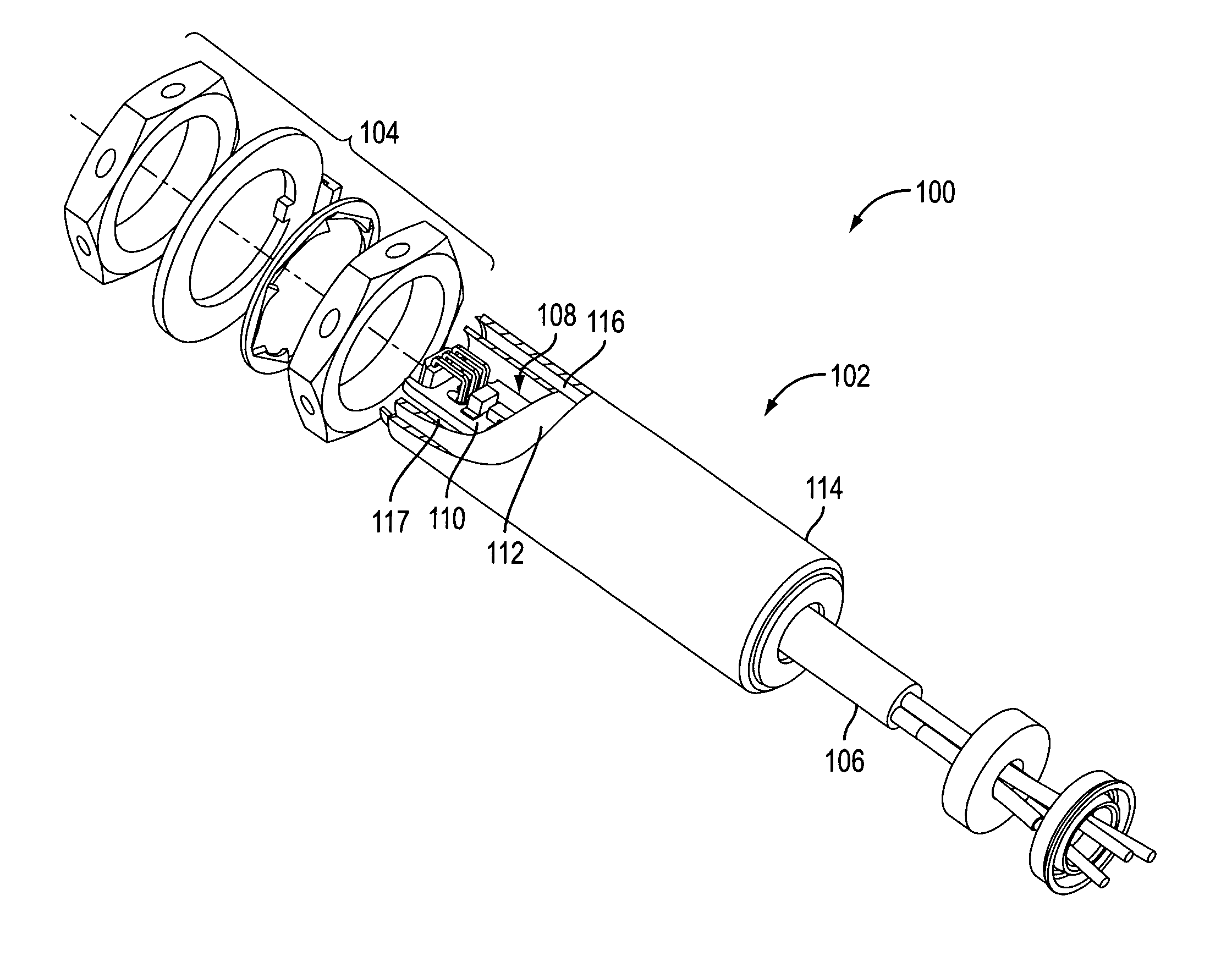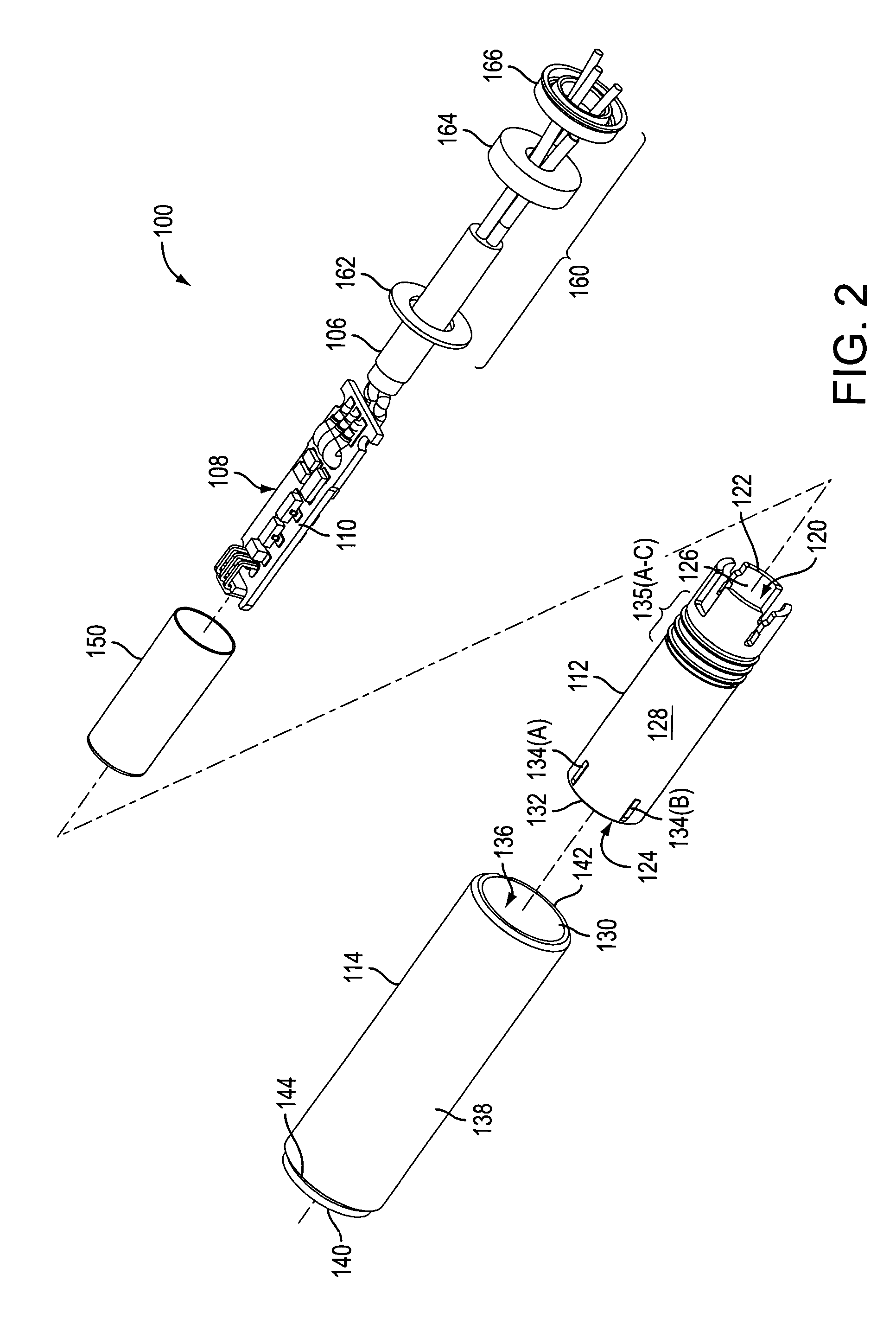Air-gap insulator for short-term exposure to a high temperature environment
a technology of air gap insulation and high temperature environment, which is applied in the direction of casings/cabinets/drawers, casings/cabinets/drawers, instruments, etc., can solve the problems of limiting the use of electronic circuitry in many places, harming their own performance, and harsh environmental conditions, etc., to achieve the effect of maintaining operability
- Summary
- Abstract
- Description
- Claims
- Application Information
AI Technical Summary
Benefits of technology
Problems solved by technology
Method used
Image
Examples
Embodiment Construction
[0015]In the following detailed description, numerous specific details are set forth in order to provide a thorough understanding of the invention. However, it will be understood that the present invention may be practiced without these specific details. In other instances, well-known methods, procedures, components and circuits have not been described in detail, so as not to obscure the present invention. Further, the presently preferred embodiments disclosed are for exemplary purposes only and other embodiments may be employed in lieu of or in combination with the embodiments disclosed.
[0016]1. Exemplary Architecture
[0017]FIG. 1 illustrates an isometric view of an electronic module 100 incorporating a packaging system in accordance with an exemplary embodiment. The exemplary electronic module 100 shown in FIG. 1 includes a packaging system 102 and mounting hardware 104 for mounting the packaging system 102 to an external device, such as an aircraft. The electronic module 100 also ...
PUM
 Login to View More
Login to View More Abstract
Description
Claims
Application Information
 Login to View More
Login to View More - R&D
- Intellectual Property
- Life Sciences
- Materials
- Tech Scout
- Unparalleled Data Quality
- Higher Quality Content
- 60% Fewer Hallucinations
Browse by: Latest US Patents, China's latest patents, Technical Efficacy Thesaurus, Application Domain, Technology Topic, Popular Technical Reports.
© 2025 PatSnap. All rights reserved.Legal|Privacy policy|Modern Slavery Act Transparency Statement|Sitemap|About US| Contact US: help@patsnap.com



